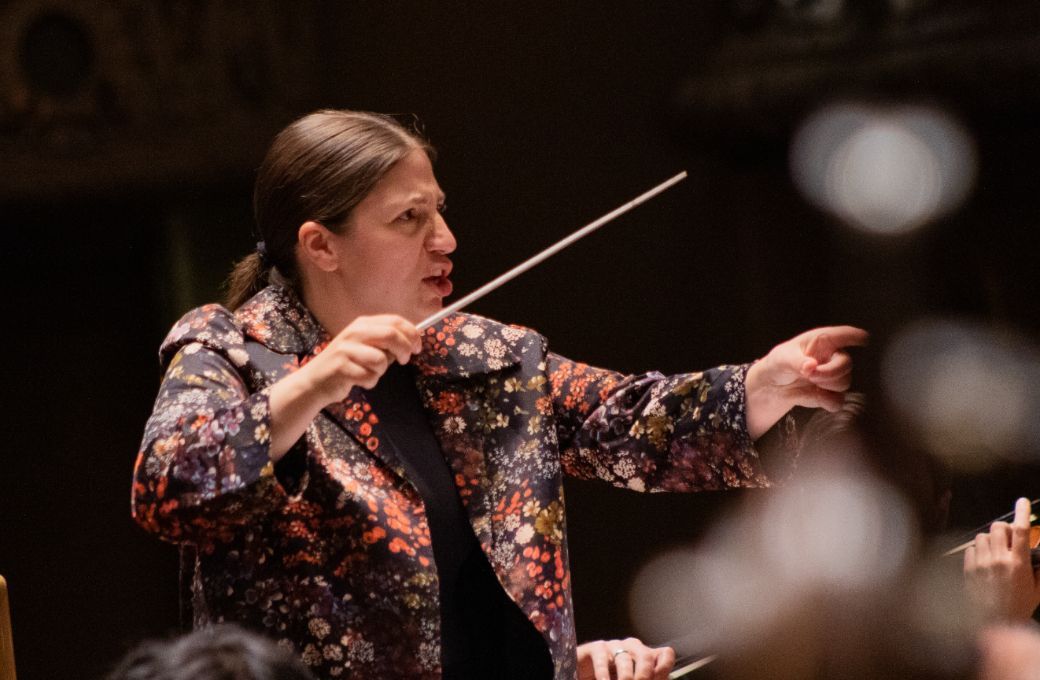This weekend marked the Pittsburgh Symphony debut of charismatic Finnish conductor Dalia Stasevska. A belated event, originally scheduled for last year, it proved to be more than worth the wait given her immediate chemistry with the orchestra across an evening of intrepid programming. The evening began with a recent work in Caroline Shaw’s 2019 piece The Observatory, a quantity recorded by Stasevska on her warmly recommended survey of contemporary orchestral music, Dalia’s Mixtape.

The Observatory was said to be inspired by the sprawling view seen from the Griffith Observatory in the hills above Los Angeles and, additionally, refers to observing the orchestra from the perspectives of composer, performer and audience. Powerful blasts began, akin to an organ with all the stops pulled, to draw one in with visceral power. But the music was just as captivating in its more scaled-back moments, with particularly touching scoring for piano and glockenspiel. Various allusions to Strauss, Brahms and others passed by stream of consciousness and, like much of Shaw’s music, it felt honest and authentic, favoring directness of expression.
That sincerity may very well have stood as a common theme for the remainder of the program. Stravinsky’s Violin Concerto in D major was a crowning product of his neoclassical era, and brought in Leila Josefowicz as soloist. A widely-spaced chord in the violin that serves as a binding element began the opening Toccata with spiky textures and piquant brass. A figure in the violin was equal parts playful and lyrical, and Josefowicz not only had total command of the difficult writing, but did so with a palpable sense of joy. There was seamless cohesion with the orchestra, with the work’s terse, aphoristic gestures tightly in sync.
The two inner Aria movements offered poignant lyricism, cleanly articulated. In the closing brightly colored Capriccio, one was struck by Josefowicz’s buoyant bow technique, purveying a full-bodied tone even at great speed. As an encore, the closing segment of Esa-Pekka Salonen’s Lachen verlernt dazzled in its technical fireworks.
The remainder of the program was devoted to Sibelius, a composer with whom Stasevska not only shares Finnish heritage, but is married to his great-grandson. The infrequently heard Sixth Symphony was an appealing choice, continuing the PSO’s exploration of Sibelius’ more seldom-performed symphonies after last season’s remarkable Fourth. The composer purportedly likened the work to a glass of pure water, free from frills or even a clear trajectory to simply exist in the moment. Wisps of strings began and Stasevska’s graceful conducting captured the ebb and flow with natural fluency. Burbling winds painted a wondrous natural landscape, burgeoning to lushness before the opening movement retreated to an enigmatic close.
Translucent textures gave the Allegretto moderato a rarefied and unsettled character; matters were more uptempo in the following movement with its cascades of strings and rapid winds. The finale was the most beguiling of all, with robust beginnings only to splice off into unexpected directions. A moving string chorale closed, as if fading back into the tundra.
Finlandia made for an attractive capstone, shining the spotlight on the Pittsburgh brass. Their broad, muscular playing was answered by the richness of the strings, and the initial weight and darkness gave way to unfettered jubilation. Let’s hope Stasevska is invited back to Heinz Hall again soon where, judging by Friday night’s reception, she’s become an instant audience favorite.


